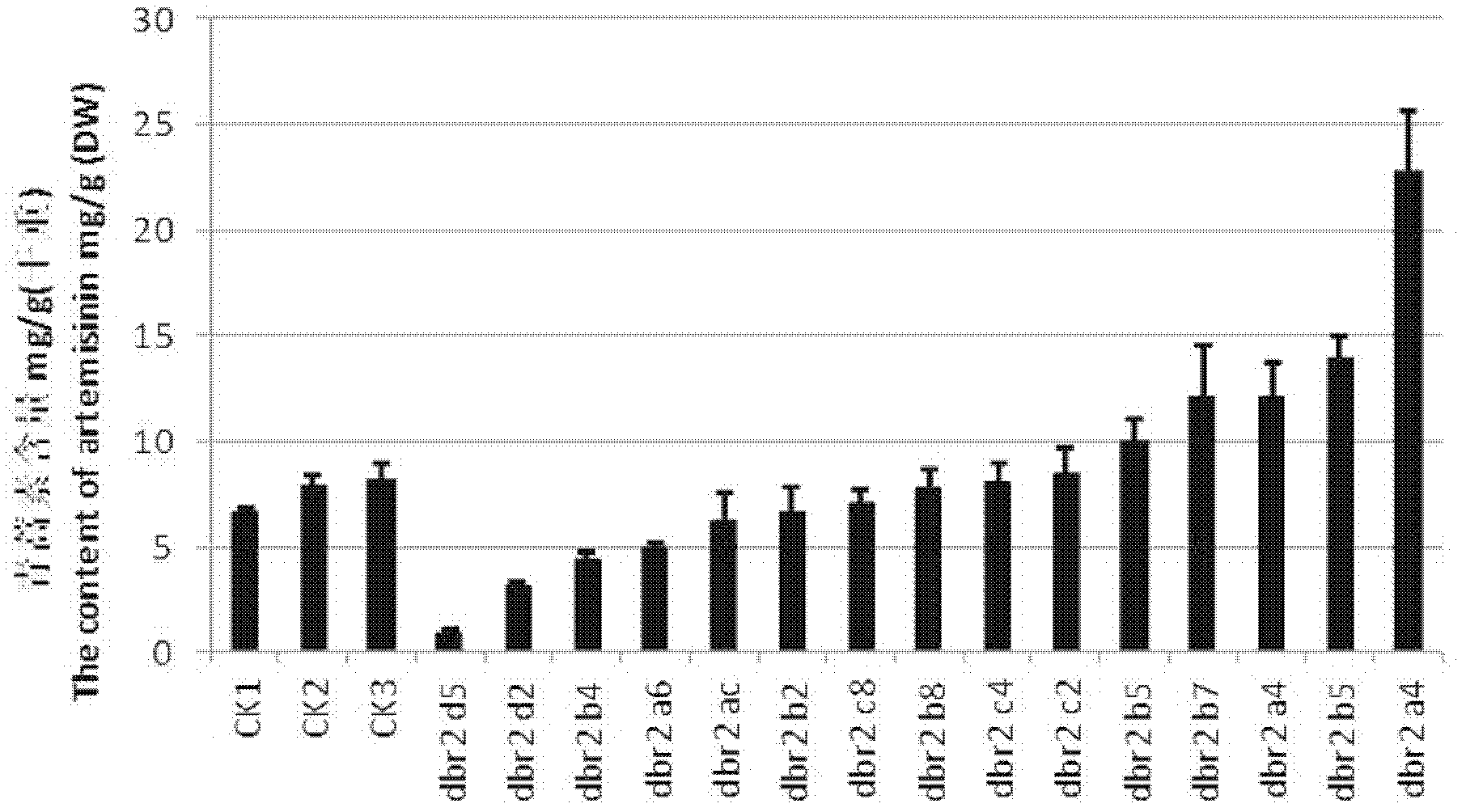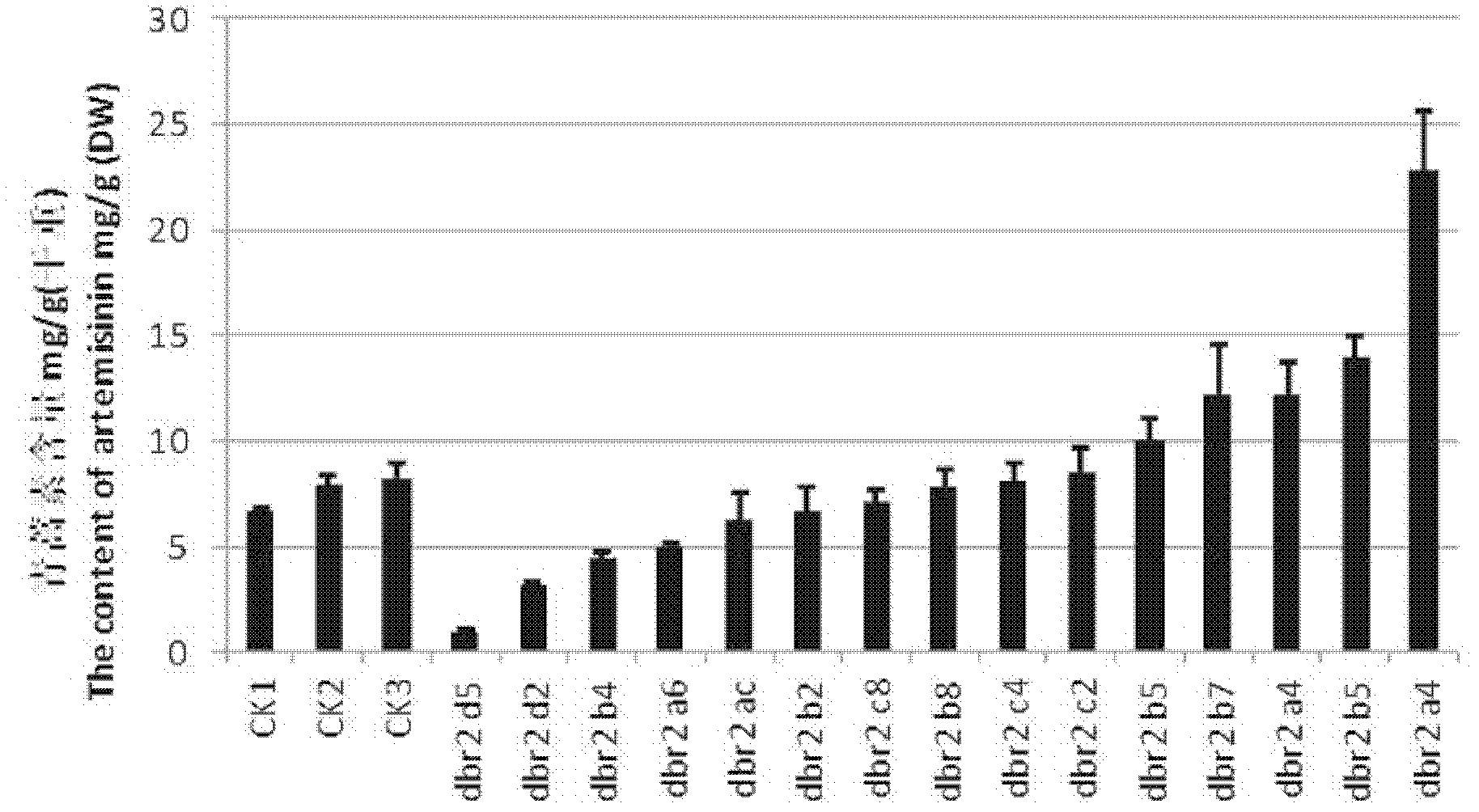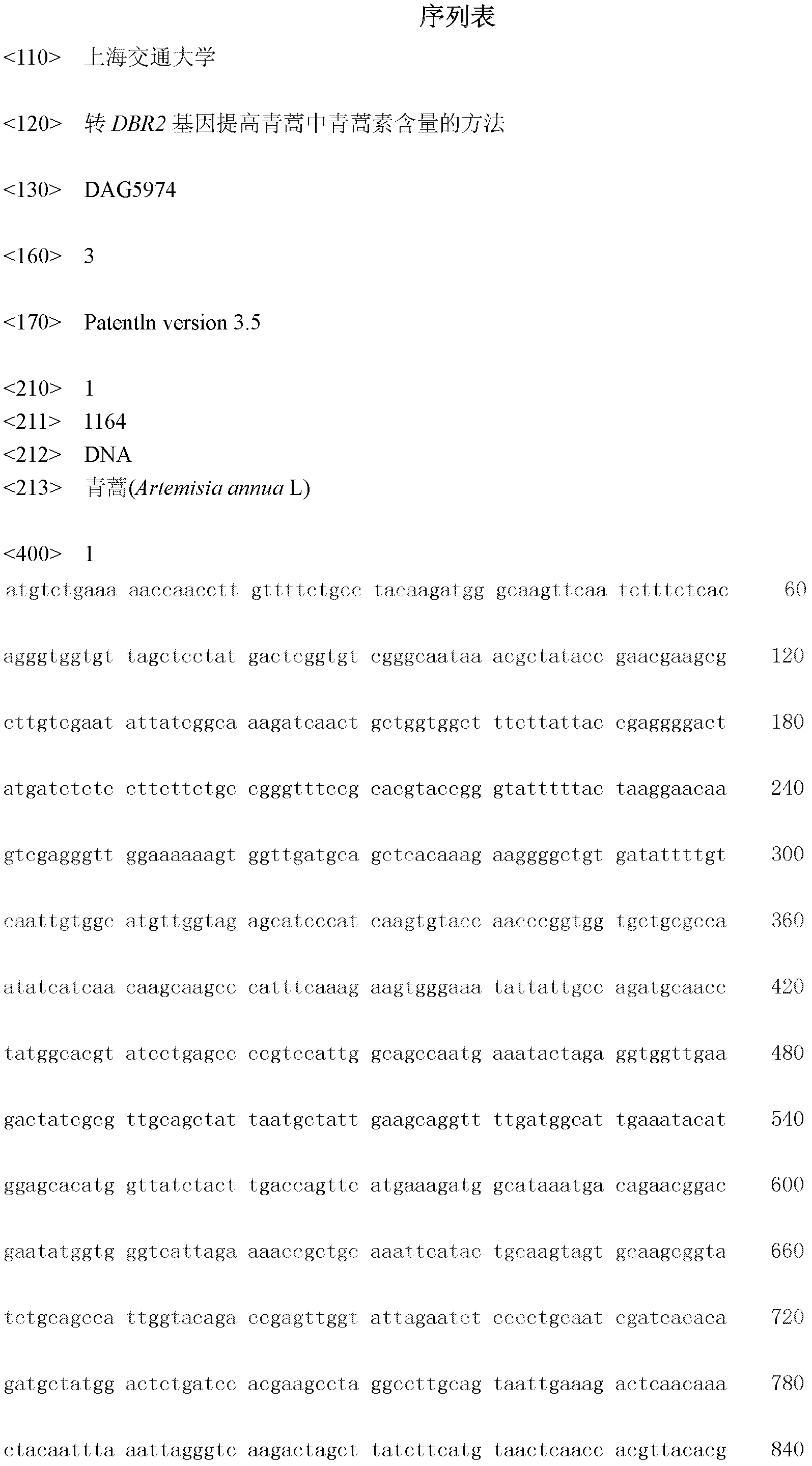Method for increasing artemisinin content in sweet wormwood by DBR2 (double bond reductase 2) gene transfer
A kind of artemisinin and transgenic technology, applied in genetic engineering, plant genetic improvement, botanical equipment and methods, etc., can solve the problems of difficulty in artificial synthesis, limitations of large-scale commercial production, and no detection of artemisinin , to achieve the effect of stabilizing new drug sources
- Summary
- Abstract
- Description
- Claims
- Application Information
AI Technical Summary
Problems solved by technology
Method used
Image
Examples
Embodiment
[0027] Step 1, cloning of Artemisia annua DBR2 gene
[0028] (1) Extraction of total RNA from Artemisia annua genome
[0029] Take 100-200 mg young leaves of Artemisia annua, quick-freeze them with liquid nitrogen, grind them quickly with a mortar, add them to a 1.5 mL Eppendorf tube filled with 1 mL TRlzol (TRlzol Reagents, GIBCOBRL, USA), shake them fully, and place them at room temperature Stand for 5 minutes, add 200 μL of chloroform, shake vigorously for 15 sec, place at room temperature for 2-3 minutes, and centrifuge at 12,000 rpm for 15 minutes at 4°C; pipette the supernatant (about 600 μL) into a clean 1.5 mL Eppendorf tube, add an equal volume of isopropyl Alcohol, mix by inverting, place at room temperature for 10min, then centrifuge at 12,000rmp for 10min at 4°C; discard the supernatant, add 1mL of 75% ethanol to wash, shake, and centrifuge at 7,500rmp for 5min at 4°C; dry at room temperature for 10-15min Dissolve in an appropriate amount (30-40μL) of RNAase-free ...
PUM
 Login to View More
Login to View More Abstract
Description
Claims
Application Information
 Login to View More
Login to View More - R&D
- Intellectual Property
- Life Sciences
- Materials
- Tech Scout
- Unparalleled Data Quality
- Higher Quality Content
- 60% Fewer Hallucinations
Browse by: Latest US Patents, China's latest patents, Technical Efficacy Thesaurus, Application Domain, Technology Topic, Popular Technical Reports.
© 2025 PatSnap. All rights reserved.Legal|Privacy policy|Modern Slavery Act Transparency Statement|Sitemap|About US| Contact US: help@patsnap.com



